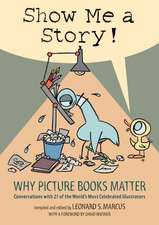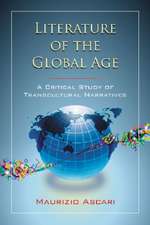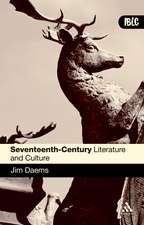European Local-Color Literature: National Tales, Dorfgeschichten, Romans Champetres
Autor Professor Josephine Donovanen Limba Engleză Paperback – dec 2010
| Toate formatele și edițiile | Preț | Express |
|---|---|---|
| Paperback (1) | 256.12 lei 6-8 săpt. | |
| Bloomsbury Publishing – dec 2010 | 256.12 lei 6-8 săpt. | |
| Hardback (1) | 947.69 lei 6-8 săpt. | |
| Bloomsbury Publishing – dec 2010 | 947.69 lei 6-8 săpt. |
Preț: 256.12 lei
Preț vechi: 294.67 lei
-13% Nou
Puncte Express: 384
Preț estimativ în valută:
49.01€ • 51.31$ • 40.55£
49.01€ • 51.31$ • 40.55£
Carte tipărită la comandă
Livrare economică 05-19 aprilie
Preluare comenzi: 021 569.72.76
Specificații
ISBN-13: 9781441119001
ISBN-10: 1441119000
Pagini: 208
Dimensiuni: 152 x 229 x 18 mm
Greutate: 0.3 kg
Editura: Bloomsbury Publishing
Colecția Continuum
Locul publicării:New York, United States
ISBN-10: 1441119000
Pagini: 208
Dimensiuni: 152 x 229 x 18 mm
Greutate: 0.3 kg
Editura: Bloomsbury Publishing
Colecția Continuum
Locul publicării:New York, United States
Caracteristici
Assesses the influence of European literatures on each other as well as on American literature
Cuprins
Preface Introduction Chapter One: Local-Color Literature and the Colonizations of Modernity Chapter Two: The Irish National Tale Chapter Three: The Scottish National Tale Chapter Four: Dorfgeschichte: The German Village Tale Chapter Five: Romans Champêtres: French Provincial Literature Epilogue: A Sketch of the Local-Color Movement in Other Countries Works Cited and Other Relevant Titles
Recenzii
"After contributing significantly to the re-assessment of local color writing in the United States, Josephine Donovan's comparative study of European local color literatures again breaks important new ground in the writing of modern literary history. Her analyses of nineteenth-century local color writing in Ireland, in Scotland, in several German speaking countries, and in France reveal the transatlantic scope of a genre that forcefully participated in discourses of modernization. The study's Foucaultian approach that insists on the cultural relevance of local knowledges, its rich historical contextualization of the respective literatures, and its comprehensive discussion of a large number of texts provide a powerful argument for the relevance of the genre and prepare the ground for further exploration." -- Sylvia Mayer, Chair of American Studies, University of Bayreuth, Germany
"Donovan's latest book contributes to the important field of transnational literary criticism. After her ground-breaking New England Local Color Literature, Donovan looks to Europe and uses her extensive knowledge of Irish, Scottish, French and German local-color tales to divest emotional "rootedness" from the Fascist blood-and-soil connections that had contributed to the near-erasure of this literature. A convincing illustration that the global is not contradistincted to local color, European Local-Color Literature shows how the most particular relationship to place-developed in nineteenth-century Europe out of a post-Enlightenment context of imperial standardization and corporate homegenization-was capable of offering an alternative artistic locus for political dissent. Reinvesting the local, Donovan's book provocatively suggests that the challenges of nineteenth-century Europe are today's challenges." -- Cécile Roudeau, Associate Professor, Université Paris 3-Sorbonne Nouvelle, France
"Josephine Donovan pioneered research in this field some thirty years ago, bringing attention to a previously neglected American tradition. Although other scholars followed suit, acknowledging its importance in American literary history, until now European local-color writing has been virtually ignored. Focusing on nineteenth-century Irish, Scottish, German, and French literature to identify an overlooked European movement, this stunningly original book argues that the European iteration embodies Foucault's concept of marginal 'subjugated knowledges.' Donovan reads the construction of local-color literature as an attempt both to preserve regional traditions and to resist modernity and the colonizing discipline of Enlightenment rationalism. Filling in the gaps, this study constitutes a radical reinterpretation of the development of Western literature." -- Deborah D. Rogers, Professor of English, University of Maine, USA.
'For the past 30 years, U.S. local color fiction has been an important part of my teaching agenda, influenced by Donovan's important early work on Sarah Orne Jewett. Now European Local-Color Literature opens my eyes to local color as an international phenomenon and illuminates such key U.S. local colorists as Jewett, Harriet Beecher Stowe, and Rose Terry Cooke as part of a much larger literary community including such figures as George Sand, Maria Edgeworth, Walter Scott. This extremely valuable book shows how 19th century international local color writing resisted totalizing urban 'cultural colonization' that threatened the rich 'local knowledge' embodied in regional tales, traditions and practices. Yet again, Donovan has enriched and expanded our understanding of local color writing and its significance." Ann Romines, Professor of English, The George Washington University, USA
'As far as I am concerned, Donovan owns local-colour scholarship... I am fascinated by Donovan's discussion of overlooked 19th-century Irish, Scottish, German and French local-colour literature as attempts not only to preserve traditions, but also to resist the colonising discipline of the Enlightenment. If the tea leaves are correct, Donovan's book will launch research in this area. A powerful, original analysis.' Times Higher Education
"I learned a great deal from this thought provoking, compellingly informed and astutely insightful comparative study. As someone who works in literatures of the modern period and their intersections with history and politics-though as often beyond as within Europe, I found immensely valuable the elegantly configured and tremendously informative survey of European local-color literature and the incisive location of those local literatures both in their immediate socio-historical and literary contexts and in the broader European context. Professor Donovan's European Local-Color Literature brings into focus and situates literary works of which we should all be more aware. These significant if hitherto underexamined literary responses 'to the institutions and ideologies of modernity' not only enrich our understanding of a rich and diverse 'premodern'-itself always already in a dialectic engagement with the modern that threatens it-as Professor Donovan points out in closing-they also offer suggestive alternatives to the formations and deformations of modernity. If a 'nostalgia for a vanishing but beloved homeworld' (122) characterizes the rich specificity of much local-color literature, on our side of the confrontation between the modern and the 'premodern' the local specificity of those 'homeworlds' narrated in local-color literature remind us, too, at least of what was lost. At best though, in the insightful analyses of Professor Donovan's comparative study, they remind us of other ways of knowing, understanding, and relating to the human and non-human life and worlds around us. European Local-Color Literature offers, as well, a suggestive counterpoint to the resistance to European modernity that occurred in the non-European world confronted not only with modernity but with modernity in the imperial grasp of Europe. Professor Donovan's work has much to teach us all-whether in or beyond Europe." -- Mary N. Layoun, Professor of Comparative Literature, University of Wisconsin-Madison, USA
Donovan does an admirable job of directing her readers' attention to many relatively unfamiliar, nineteenth-century works from these two countries, as well as from France and Germany. The incisive comparisons she draws between all these stories highlight various ways in which local-color literature represented a locus for political and cultural dissent during a period when European thought was saturated with the totalizing force of a post-Enlightenment drive toward modernization. This pioneering study opens the way for further informed comparative analysis of the origins, forms, and influences of this distinctive form of writing.
Full of clever literary insights and draws comparisons between texts written in different languages in ambitious and intelligent ways.
"Donovan's latest book contributes to the important field of transnational literary criticism. After her ground-breaking New England Local Color Literature, Donovan looks to Europe and uses her extensive knowledge of Irish, Scottish, French and German local-color tales to divest emotional "rootedness" from the Fascist blood-and-soil connections that had contributed to the near-erasure of this literature. A convincing illustration that the global is not contradistincted to local color, European Local-Color Literature shows how the most particular relationship to place-developed in nineteenth-century Europe out of a post-Enlightenment context of imperial standardization and corporate homegenization-was capable of offering an alternative artistic locus for political dissent. Reinvesting the local, Donovan's book provocatively suggests that the challenges of nineteenth-century Europe are today's challenges." -- Cécile Roudeau, Associate Professor, Université Paris 3-Sorbonne Nouvelle, France
"Josephine Donovan pioneered research in this field some thirty years ago, bringing attention to a previously neglected American tradition. Although other scholars followed suit, acknowledging its importance in American literary history, until now European local-color writing has been virtually ignored. Focusing on nineteenth-century Irish, Scottish, German, and French literature to identify an overlooked European movement, this stunningly original book argues that the European iteration embodies Foucault's concept of marginal 'subjugated knowledges.' Donovan reads the construction of local-color literature as an attempt both to preserve regional traditions and to resist modernity and the colonizing discipline of Enlightenment rationalism. Filling in the gaps, this study constitutes a radical reinterpretation of the development of Western literature." -- Deborah D. Rogers, Professor of English, University of Maine, USA.
'For the past 30 years, U.S. local color fiction has been an important part of my teaching agenda, influenced by Donovan's important early work on Sarah Orne Jewett. Now European Local-Color Literature opens my eyes to local color as an international phenomenon and illuminates such key U.S. local colorists as Jewett, Harriet Beecher Stowe, and Rose Terry Cooke as part of a much larger literary community including such figures as George Sand, Maria Edgeworth, Walter Scott. This extremely valuable book shows how 19th century international local color writing resisted totalizing urban 'cultural colonization' that threatened the rich 'local knowledge' embodied in regional tales, traditions and practices. Yet again, Donovan has enriched and expanded our understanding of local color writing and its significance." Ann Romines, Professor of English, The George Washington University, USA
'As far as I am concerned, Donovan owns local-colour scholarship... I am fascinated by Donovan's discussion of overlooked 19th-century Irish, Scottish, German and French local-colour literature as attempts not only to preserve traditions, but also to resist the colonising discipline of the Enlightenment. If the tea leaves are correct, Donovan's book will launch research in this area. A powerful, original analysis.' Times Higher Education
"I learned a great deal from this thought provoking, compellingly informed and astutely insightful comparative study. As someone who works in literatures of the modern period and their intersections with history and politics-though as often beyond as within Europe, I found immensely valuable the elegantly configured and tremendously informative survey of European local-color literature and the incisive location of those local literatures both in their immediate socio-historical and literary contexts and in the broader European context. Professor Donovan's European Local-Color Literature brings into focus and situates literary works of which we should all be more aware. These significant if hitherto underexamined literary responses 'to the institutions and ideologies of modernity' not only enrich our understanding of a rich and diverse 'premodern'-itself always already in a dialectic engagement with the modern that threatens it-as Professor Donovan points out in closing-they also offer suggestive alternatives to the formations and deformations of modernity. If a 'nostalgia for a vanishing but beloved homeworld' (122) characterizes the rich specificity of much local-color literature, on our side of the confrontation between the modern and the 'premodern' the local specificity of those 'homeworlds' narrated in local-color literature remind us, too, at least of what was lost. At best though, in the insightful analyses of Professor Donovan's comparative study, they remind us of other ways of knowing, understanding, and relating to the human and non-human life and worlds around us. European Local-Color Literature offers, as well, a suggestive counterpoint to the resistance to European modernity that occurred in the non-European world confronted not only with modernity but with modernity in the imperial grasp of Europe. Professor Donovan's work has much to teach us all-whether in or beyond Europe." -- Mary N. Layoun, Professor of Comparative Literature, University of Wisconsin-Madison, USA
Donovan does an admirable job of directing her readers' attention to many relatively unfamiliar, nineteenth-century works from these two countries, as well as from France and Germany. The incisive comparisons she draws between all these stories highlight various ways in which local-color literature represented a locus for political and cultural dissent during a period when European thought was saturated with the totalizing force of a post-Enlightenment drive toward modernization. This pioneering study opens the way for further informed comparative analysis of the origins, forms, and influences of this distinctive form of writing.
Full of clever literary insights and draws comparisons between texts written in different languages in ambitious and intelligent ways.
















